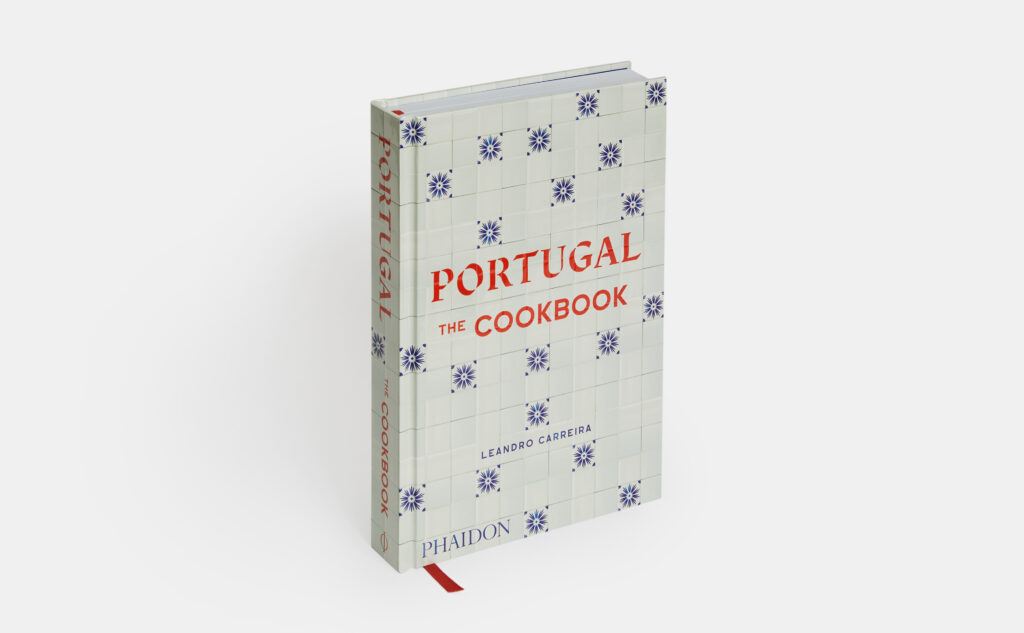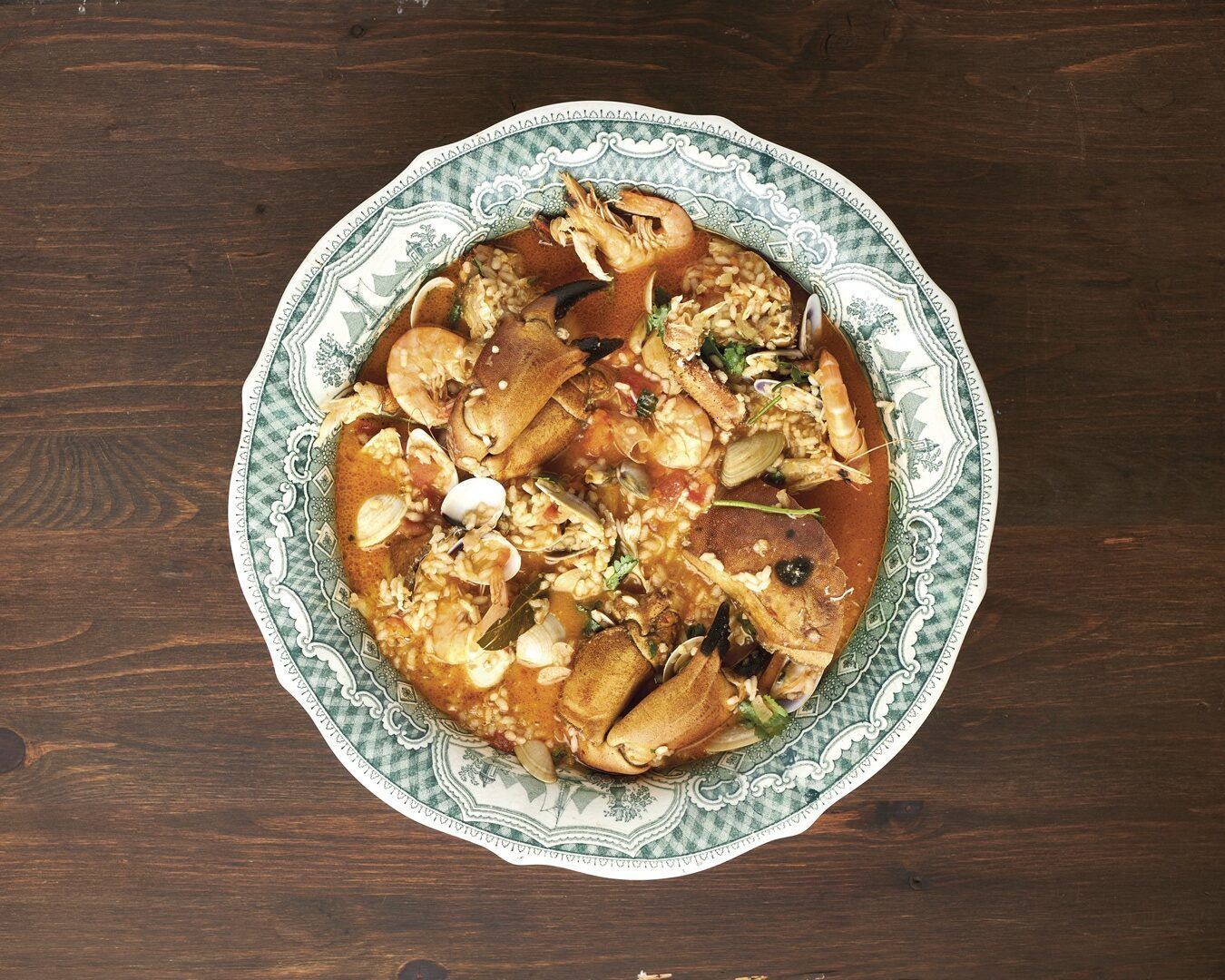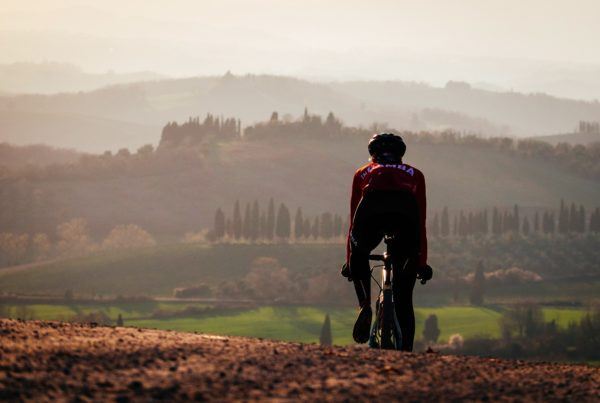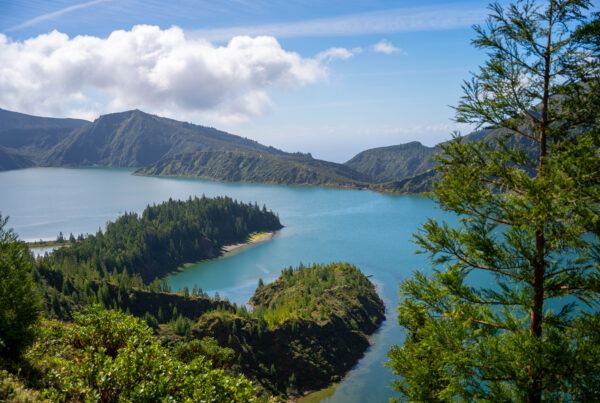Arroz de Marisco is a seafood classic from the Portuguese Cuisine. Despite its creation being associated to a beach in Central Portugal – Praia de Vieira de Leiria, it is widely available in many restaurants across coastal Portugal. It usually comprises of a variety of shellfish, peppers, tomatoes, fresh herbs, and short-grain rice making an indulgent and delicious dish. Not convinced? This dish is so good that it was actually selected in back in 2011 as one of the seven wonders of Portuguese gastronomy.
Recipe
Preparation time: 30 minutes, plus 12 hours standing
Cooking time: 1 hour
Serves: 6
500 g/1 lb 2 oz fresh clams
4 large tomatoes, bull’s heart if available or other
good-quality ripe tomatoes
200 ml/7 fl oz (. cup) extra virgin olive oil, plus extra for drizzling
2 white onions, peeled and very finely chopped
2 garlic cloves, peeled and very finely chopped
1 bay leaf
150 g/5 oz (1 cup) tomato pulp
1 spiny lobster or rock lobster
450 g/1 lb (2. cups) long-grain rice
1 medium brown crab
200 g/7 oz prawns (shrimp)
60 ml/2 fl oz (2 tablespoons) lemon juice. bunch coriander (cilantro), roughly chopped
2 red chillies, finely chopped
sea salt and freshly ground black pepper
The day before, scrub the shells of the clams to remove any dirt. Discard any that don’t close when their shells are tapped. Rinse the clams several times in cold water to remove any sand and grit, then put them into a large bowl and add enough water to cover them. Add enough fine sea salt to make a brine with 1% salt and stir well. Leave to stand in the fridge for 12 hours. This will help to expel any sand inside the clams. Have a large bowl of iced water nearby.
Bring a large saucepan of water to the boil. Using a sharp knife, score the top of the tomatoes with a small cross shape. Once the water is boiling, carefully add the tomatoes and blanch for 30 seconds, then transfer them with a slotted spoon to the iced water and leave to cool. Once cool enough to handle, peel off the skins, cut in half and de-seed, then dice the flesh. Set aside.
Heat the olive oil in a large saucepan over a low heat. Add the onions, garlic and bay leaf and cook for 10 minutes, or until the onions have softened but not coloured. Add the tomato pulp and mix well. Cook gently for 5 minutes, then add the fresh tomatoes and cook gently for another 45 minutes. Have a large bowl of iced water ready nearby.
Bring a large saucepan of water to the boil, add 50 g/2 oz (. cup) salt then, once the water is boiling, reduce the heat so it is simmering and add the lobster. Cook for 4 minutes. Remove the lobster from the pan and leave to cool in the iced water. Set the cooking water aside. You will need about 1.6 litres/54 fl oz (6. cups).
Remove the shells from the lobster, keep the head juices together with the coral in a bowl for later, then remove the back vein and discard. Cut the meat into chunks and put into a bowl. Cover with food wrap and set aside.
Add the rice to the tomato base and dry cook for 5 minutes, then cover the rice with the reserved lobster cooking water and cook gently over a medium heat. Cut the crab into 4 pieces and add it to the rice, adding more water if necessary, then add the clams and prawns (shrimp). Keep cooking over a medium heat until the rice is nearly cooked.
Season with salt and pepper. Remove from the heat and leave the rice to rest in the pan before serving. Stir in the lobster coral, then drizzle with extra virgin olive oil and lemon juice. Add the coriander (cilantro) and chilli and taste and adjust the seasoning, if necessary.
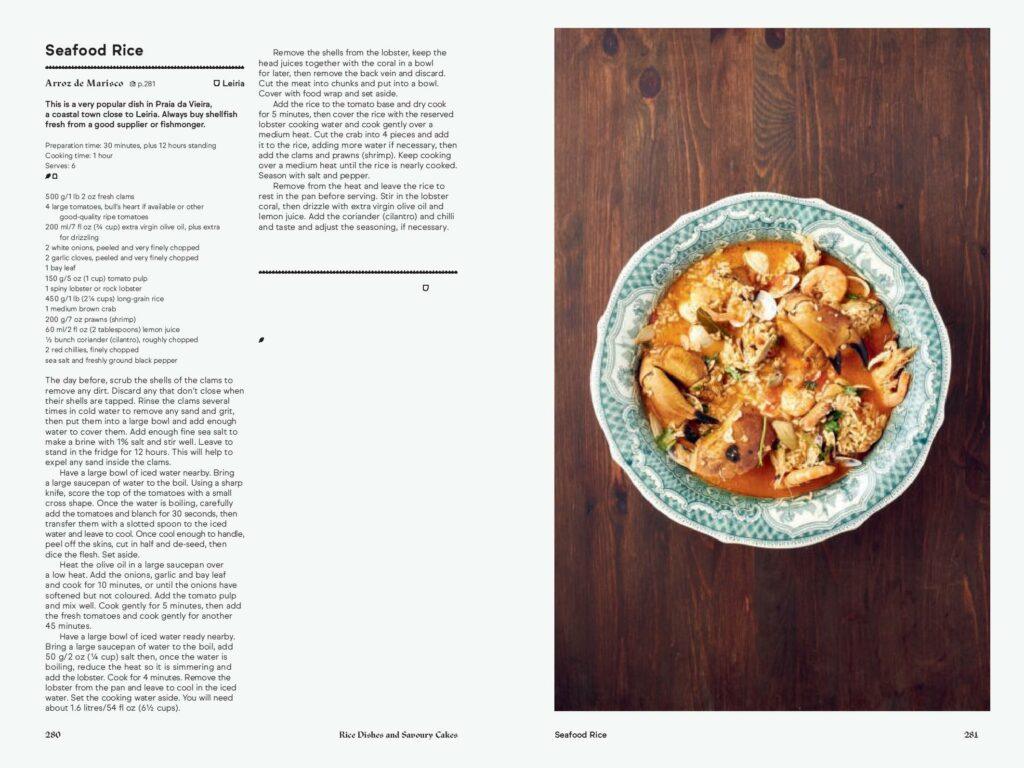
Portugal: The Cookbook
With its diverse cuisine and intriguing culinary history, Portugal is a top travel destination for food lovers worldwide. Portugal: The Cookbook, published by Phaidon, gathers together dishes from every region of the country, including fish and shellfish dishes from the Algarve coast, hearty stews from the Douro Valley, and the famous and beloved pastries of Lisbon. There are more than 550 traditional recipes for home cooks that encapsulate the breadth and diversity of the food of Portugal, a country whose immense culinary influence has spread far beyond its borders.
Chef Leandro Carreira
Leandro Carreira cut his culinary teeth at Andoni Luis Aduriz’s restaurant, Mugaritz, in the Basque region of Spain, before arriving in London and working with Nuno Mendes at Viajante as Head Chef. His residency at Climpson’s Arch in East London, an exploration of regional Portuguese cooking, received five-star reviews. Londrino, his first restaurant, opened in Bermondsey in 2017 and his current project, The Sea, The Sea, in Chelsea has been followed by The Sea, The Sea Chef’s Table in late 2021.
The London-based chef spent three years researching the length and breadth of his home country, from the mountainous north, to the southern beach resorts of the Algarve, and the island outposts of Madeira and the Azores. The result is the most definitive and largest collection of traditional Portuguese recipes translated into English for home cooks.
